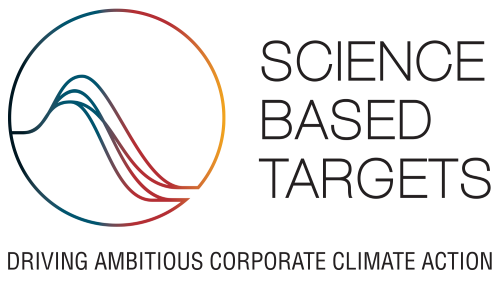OUR COMMITMENT TO SBTI
Fighting Climate Change
In May 2024, Kährs' science-based climate change targets were validated and approved by the Science Based Targets initiative. Kährs announced its commitment to science-based targets in December 2021 and submitted its targets for validation in 2023.
Kährs Group’s targets will be available on the SBTi’s target dashboard from 6 June 2024 https://sciencebasedtargets.org/target-dashboard
Kährs targets:
Net-Zero Target
Kährs Holding AB (Kährs Group) commits to reach net-zero greenhouse gas emissions across the value chain by 2040.
Near-Term Targets:
Kährs Group commits to reduce absolute scope 1 and 2 GHG emissions 95% by 2030 from a 2020 base year.* Kährs Group also commits to increase active annual sourcing of renewable electricity from 74.5% in 2022 to 100% by 2030. Kährs Group further commits to reduce scope 3 GHG emissions 42% by 2030 from a 2020 base year.*
Long-Term Targets: Energy & Industry:
Kährs Group commits to maintain a minimum of 95% absolute scope 1 and 2 GHG emissions from 2030 through 2040 from a 2020 base year.* Kährs Group also commits to reduce scope 3 GHG emissions 90% by 2040 from a 2020 base year.*
*Target boundary includes biogenic land-related emissions and removals from bioenergy feedstocks.
FLAG: Kährs Group commits to reduce absolute scope 3 FLAG GHG emissions 72% by 2040 from a 2020 base year (includes FLAG emissions and removals).
Climate change has been a major concern for decades, and while Kährs has taken important steps within sustainability and innovation for a long time now, there has been an increasing understanding of climate urgency and commitment towards climate from the broader business community over the last few years. No country or organization can afford to ignore the risks of climate change.
The Paris Agreement is a legally binding international treaty on climate change. In 2015, 196 countries adopted the Paris Agreement to limit global temperatures to well below 2 degrees Celsius compared to pre-industrial levels, with a target of limiting global warming to 1.5 degrees. The main method of reaching this goal is through the global reduction in greenhouse gas (GHG) emissions.
The picture shows where we are today in relation to pre-industrial levels, but also different scenarios in relation to the Paris agreement goal.
To maintain the 1.5 °C goal, according to climate scientists, the world must cut GHG emissions in half by 2030 and become net-zero, which means removing as much greenhouses gases from the atmosphere as emitted by 2050.
This will require long-term deep decarbonization targets of 90-95% across all scopes before 2050 and it will take all organizations, companies and governments working closely together to achieve this future positive goal.
BREAKING DOWN GREENHOUSE GASES
To be able to set GHG reduction targets aligned with science, it is essential to understand and track all emission types. Many companies may find that their biggest impact exists outside of their operations and within their supply chain, therefore it is critical to know and map where your largest impacts exist. This is also the reason why setting goals connected solely to your own operations many times is far from enough to make any impact on climate change.
The Greenhouse Gas Protocol, which helps companies and governments to measure and manage climate-warming emissions, has broken down GHG emissions into three categories for corporations:
SCOPE 1
Direct GHG Emissions: These are emissions directly in a company’s control and occur from facilities and vehicles owned or controlled by the company, including manufacturing of products, the creation of waste, and fueling company vehicles and equipment.
SCOPE 2
Indirect Emissions from Purchased Energy: These GHG emissions are generated from purchased electricity, natural gas, HVAC, refrigeration, and other energy consumed by the company.
SCOPE 3
Indirect Emissions from Product Lifecycle: Scope 3 emissions are a consequence of the activities of the company but occur from sources not owned or controlled by the company. All indirect emissions (not included in Scope 2) that occur in the value chain of the reporting company, including both upstream and downstream emissions as from purchased parts and materials, transportation of goods to customers, to employees’ business travel or commuting.
HOW KÄHRS CAN CONTRIBUTE AND TAKE CLIMATE ACTION
A best practice for companies is to ensure that their reduction commitments are consistent with the Paris Agreement and keep global temperature increase below 1.5 degrees Celsius.
This is where the Science Based Targets initiative (SBTi) comes in. The SBTi aims to elevate businesses’ commitment to GHG reductions and show how much and how quickly they need to reduce their greenhouse gas (GHG) emissions to prevent the worst effects of climate change.
The SBTi is a partnership between the Carbon Disclosure Project (CDP), the United Nations Global Compact (UNGC), World Resources Institute (WRI) and the World Wildlife Fund for Nature (WWF), and it is funded by companies, corporate and charitable foundations, and governments.
Although any corporation can create GHG reduction targets, SBTi approval requires third-party assessment and validation ensuring a company’s efforts are ambitious and bold enough to limit global warming to 1.5 degrees.
By collaborating with SBTi and having our GHG reduction targets validated as science based, we know that we have not only made a firm commitment to long term sustainable growth, but we also know that will be on track contributing to keep global temperatures at the 1.5-degree Celsius limit.
